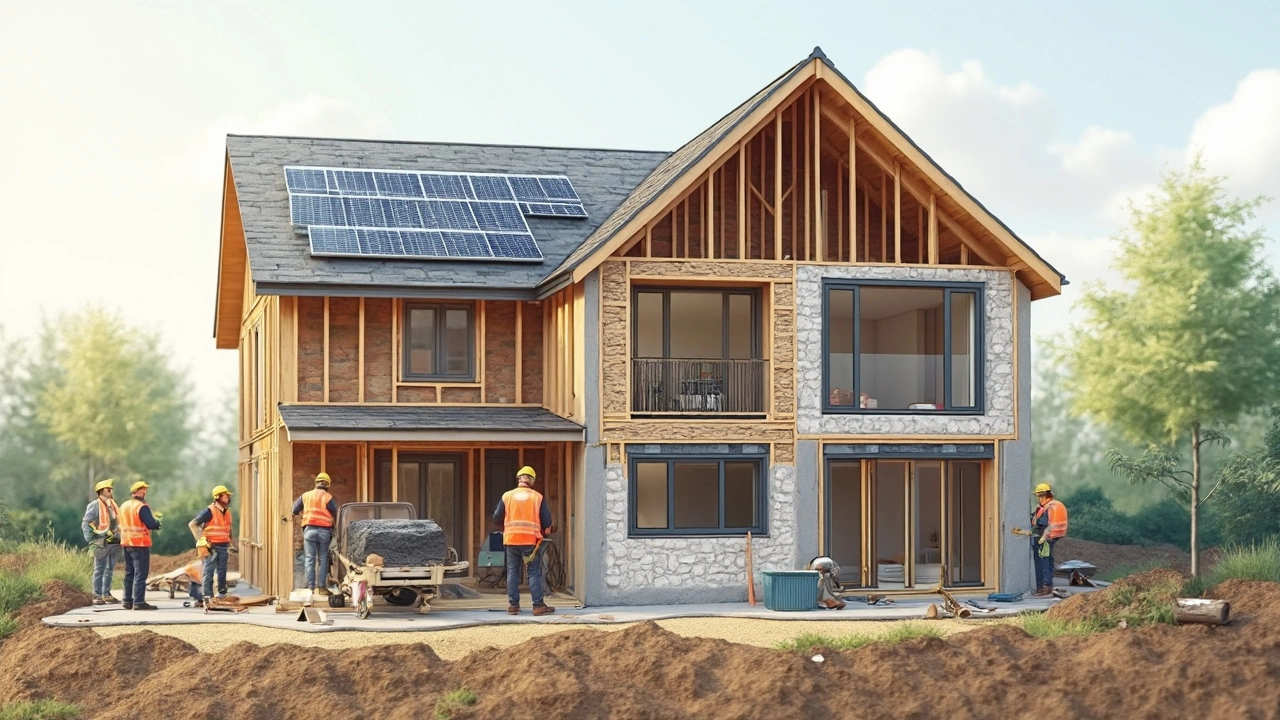Building Techniques: Simple Tips for Strong, Safe Construction
When you start any building project, the first thing you need is a clear plan. Knowing which technique fits your budget, skill level and the end use can save you time, money and headaches. Below are the basics that work for everything from a garden shed to a full‑size house.
Choosing the Right Materials
Material choice drives durability, cost and how easy the build will be. Wood is cheap and easy to cut, but you’ll need proper treatment to avoid rot. If you want fire resistance and low maintenance, steel framing is a solid option – it’s heavier, so you’ll need proper tools, but it lasts forever. Concrete gives great strength for foundations and walls, yet mixing and pouring takes some practice.
Before you buy, check local building codes. Some areas require specific fire‑rating or insulation standards, especially for residential homes. A quick call to the council or a look at the online code table will tell you what’s mandatory, so you don’t have to redo work later.
Step‑by‑Step Construction Basics
1. Site prep – Clear the area, level the ground and mark where walls will go. A simple string line and a few stakes can replace expensive laser levels for small projects.
2. Foundation – For most DIY builds, a shallow concrete slab or compacted gravel base works. Make sure the base is level; a level bubble can help you spot high spots fast.
3. Framing – Lay out the floor joists first, then erect walls. Use a carpenter’s square to keep corners at 90 degrees. If you’re using steel studs, attach them with a drill and self‑tapping screws for speed.
4. Sheathing and roofing – Plywood or OSB boards go over the frame, then you add roofing felt and shingles. Overlap each layer to keep water out.
5. Finishing – Insulate, drywall, and install doors or windows. When you reach the interior, take a moment to run a quick check for any gaps or loose screws; fixing them now saves trouble later.
Throughout the build, keep a notebook of measurements, material batches and any changes you make. This record helps you stay organized and makes it easier to hand the project over to a professional if you need a final inspection.
Some quick tips to boost quality:
- Use a moisture meter on wood before you cut – dried wood reduces shrinkage later.
- Apply construction adhesive at joint points for extra strength.
- Never skip a step in safety gear – gloves, goggles and a dust mask keep you healthy.
Finally, remember that every building technique has a learning curve. Start with a small project, master the basics, then scale up. The more you practice, the smoother each build will become, and you’ll end up with structures that stand the test of time.

What Are Most New Builds Made Of? A Look Inside Modern Construction
Apr 23, 2025, Posted by Damon Blackwood
Curious what materials go into most modern new builds? From timber frames to insulated concrete blocks, today's homes mix old favorites with cutting-edge products. This article breaks down what gets used the most, why builders like certain methods, and what that means for your comfort and bills. Discover surprising facts about insulation, fire safety, and eco-friendly trends. Practical tips included if you're planning a project or just looking to understand your home's bones.
MORE
Understanding the 345 Rule in Commercial Construction
Nov 6, 2024, Posted by Damon Blackwood
The 345 rule in commercial construction refers to a simple yet crucial principle used to ensure the stability and safety of structures. This rule is particularly relevant in construction site safety and project planning, ensuring precise angles when setting up forms or structures. Derived from the Pythagorean theorem, the rule is a quick mathematical check for right angles. It enhances the accuracy of construction projects, leading to safer and more durable buildings.
MORESEARCH HERE
Categories
TAGS
- foundation repair
- construction
- commercial construction
- new builds
- home improvement
- home renovation
- bathroom renovation
- construction materials
- home foundation
- renovation tips
- residential construction
- building types
- contractor
- foundation cracks
- home construction
- construction differences
- kitchen installation
- real estate
- house foundation
- structural integrity